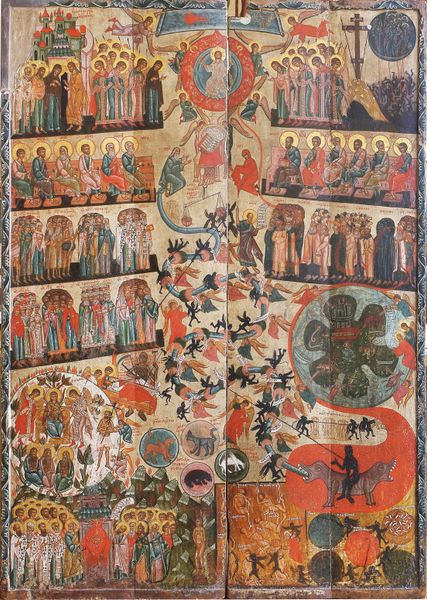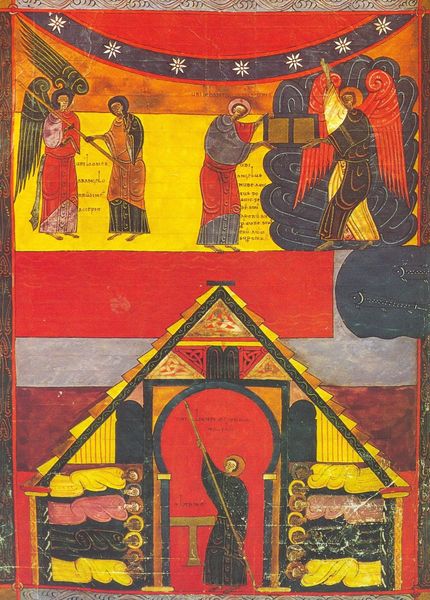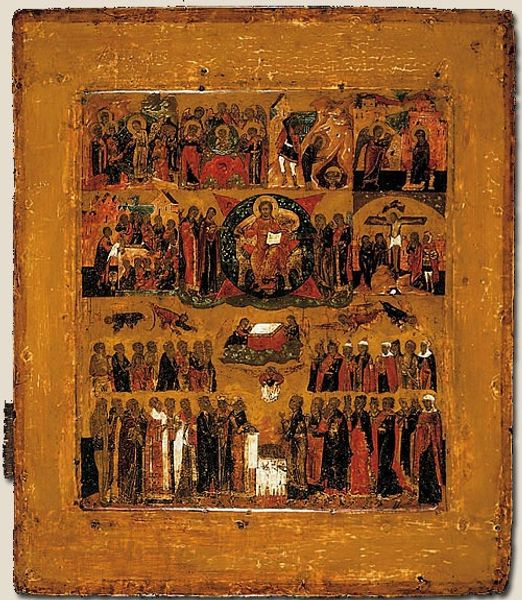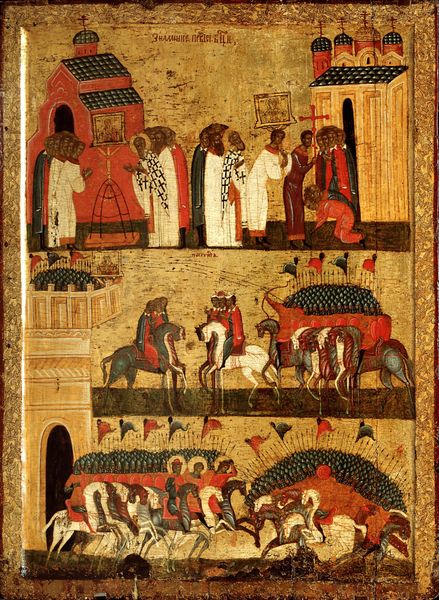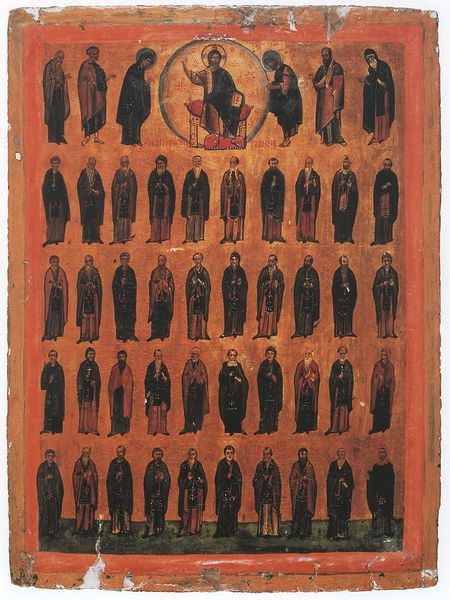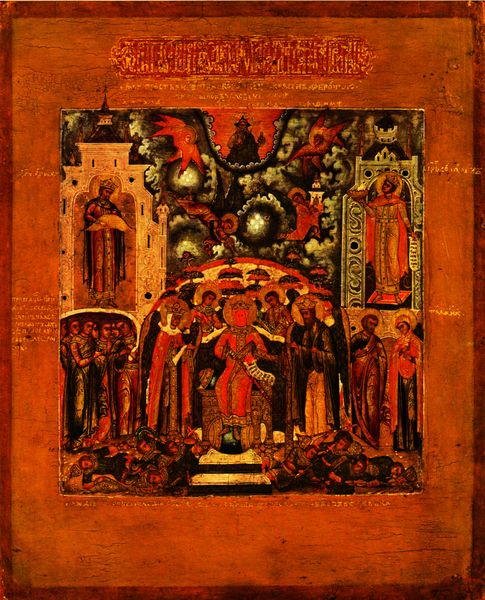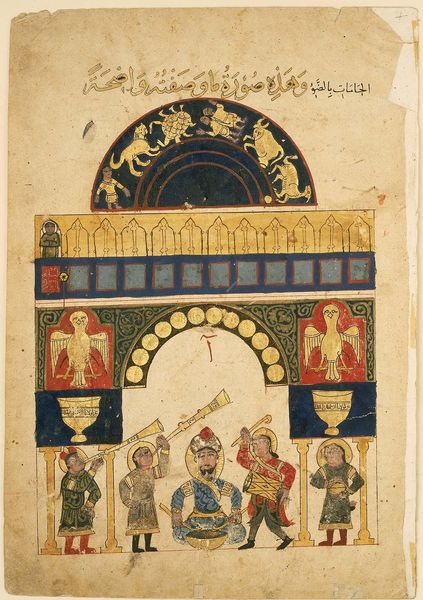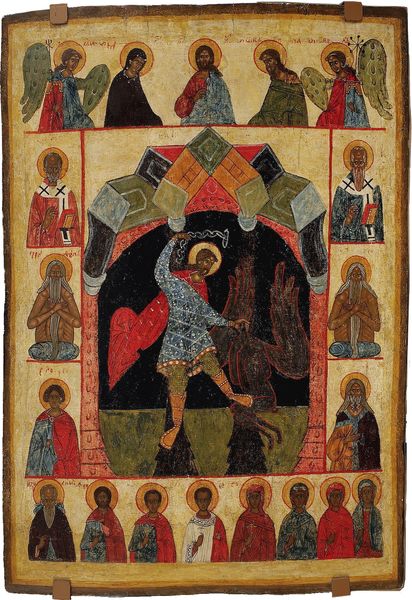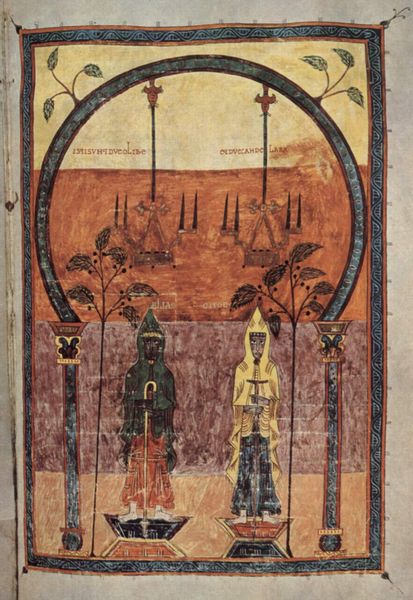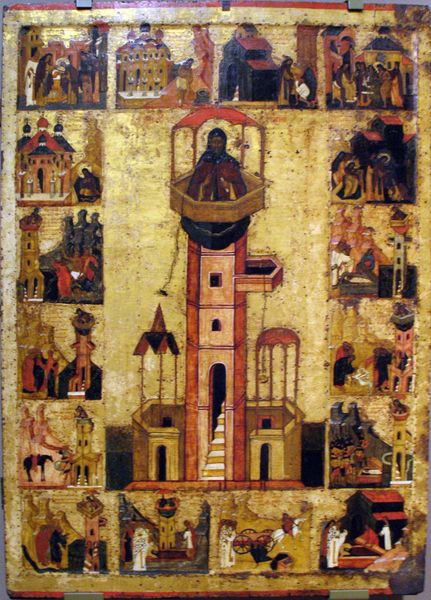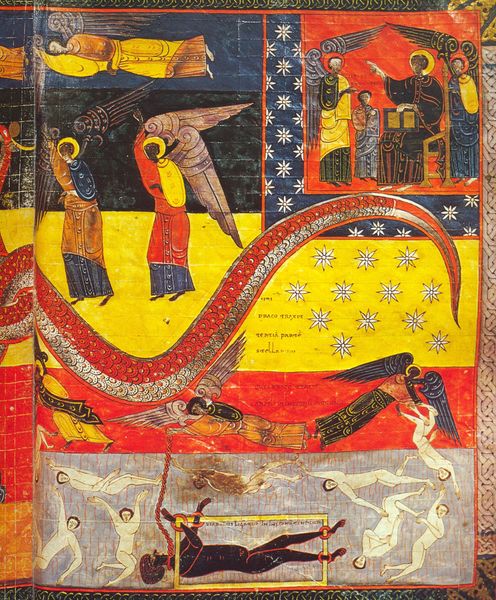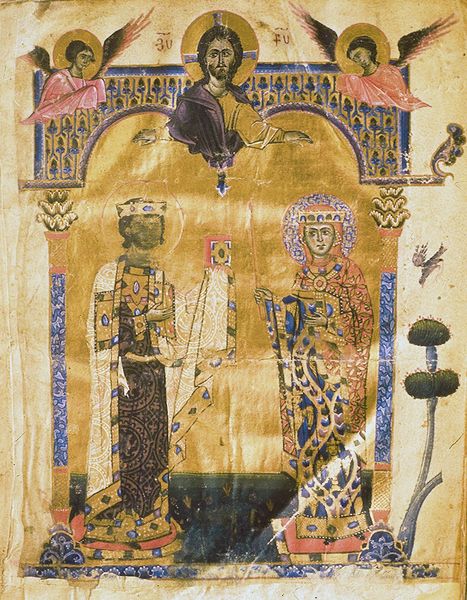
The Last Judgement: Icon from a tetraptych 1175
0:00
0:00
orthodoxicons
Saint Catherine's Monastery, Mount Sinai, Egypt
tempera, painting
#
byzantine-art
#
medieval
#
tempera
#
painting
#
history-painting
Copyright: Orthodox Icons,Fair Use
Editor: We're looking at "The Last Judgement: Icon from a tetraptych," dating back to 1175. It’s a tempera painting and currently resides at Saint Catherine's Monastery in Egypt. My first impression is the density of figures; it feels packed with symbolic imagery, creating a sense of both awe and foreboding. What strikes you when you look at this piece? Curator: Indeed, it's a powerful visual encoding of cultural memory surrounding the apocalypse. Look at how Christ in Majesty dominates the composition at the top. What does his placement tell you about the Byzantine worldview? Editor: It suggests a hierarchical structure, where the divine oversees everything. The figures surrounding Christ seem important too... perhaps saints? Curator: Exactly. The saints and apostles are intercessors, echoing their role within Byzantine liturgy. Note also the river of fire emanating down – that represents divine judgment, but consider how even damnation can be read through an optimistic lens. Editor: How so? It looks quite fearsome. Curator: While fear is definitely part of it, fire also purifies. Even this destruction holds potential for ultimate redemption, or, at least, transformation. How is that similar or dissimilar from the cultural views today? Editor: Hmm… perhaps like a forest fire that devastates, but also fertilizes new growth? So, even within such a definitive scene as the Last Judgement, there’s an element of ongoing, cyclical renewal embedded in its symbols. Curator: Precisely! And remember how viewers through centuries of Byzantium internalize that, through a continuous conversation across media: mosaics, hymns, and beyond. What symbols did you think were scary when you were little? How has it transformed your understanding over time? Editor: I always found skeletons scary, but I'm learning that they are a symbol of the impermanence of the human body! I am surprised how something old can seem both distant, but relevant to today's issues. Curator: Excellent! Icons act as a gateway, carrying not only religious beliefs, but cultural identity itself, transformed with the passage of time.
Comments
No comments
Be the first to comment and join the conversation on the ultimate creative platform.
